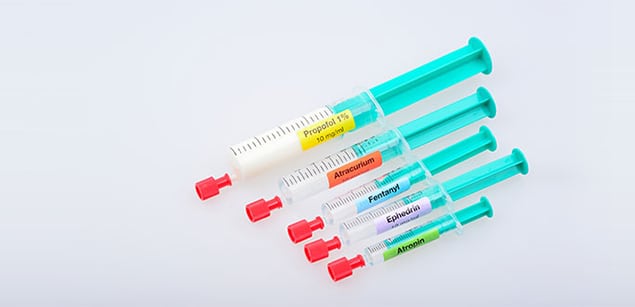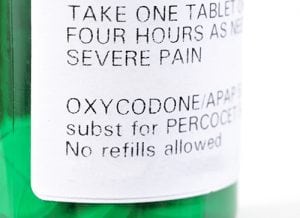
Our rapid opiate detox process can give you your life back.
The development and use of powerful new painkillers in recent history has given welcome relief to sufferers of severe or chronic pain. Unfortunately, along with this relief has come an increased prevalence of opiate addiction. We provide rapid opiate detox to help.
- Safety and privacy of our patients are our top priorities
- We provide access to a soothing aftercare center
CONTACT US TODAY
Doctors often prescribe opiates like oxycodone or fentanyl to their patients for limited use while the patients are recovering from an injury or surgery. Some people will develop a physical dependency on the drug and find that they are unable to stop taking it without experiencing withdrawal symptoms. These people may find ways to obtain the drugs illegally or may switch to heroin, which can be easier to obtain and is usually much less expensive.
Whether a person is using heroin or prescription opiates, he will often realize that he has become dependent and try to wean himself off the drug or simply stop taking it. This produces extremely unpleasant symptoms such as vomiting, diarrhea, muscle aches and spasms, bone pain, frantic anxiety, irritability and insomnia.
When people are driven back to drug use to alleviate the pain of withdrawal, they often become afraid of attempting to detox again, even with support. This unwillingness to attempt traditional detoxification can keep people in the grip of an addiction that costs them their jobs, their families and even their lives.
Rapid Opiate Detox
The newest method of opiate detoxification was developed to allow those who are dependent on opiates to overcome their physical dependence without consciously suffering withdrawal. The method is called rapid opiate detox, and consists of flushing the drugs from the patient’s system while he or she is sedated.
The method of detoxification while anesthetized was first introduced by Dr. Norbert Loimer in 1988. Since then, the procedure has been further developed and refined to be safer, faster and more effective. Under modern procedures, the patient is only sedated, not anesthetized, and the entire course of treatment is accomplished in as little as four or five days.
Rapid detox is particularly attractive to high-profile individuals who are seeking quick, private and confidential treatment. The procedure is not covered by health insurance and is more expensive than traditional methods.
What to Expect
Rapid detox begins with the patient checking into a private room at a surgical center. The first day or two are spent undergoing a complete health screening. This will include a medical history as well as tests for heart, kidney and liver function. A chest x-ray and blood pressure reading will be taken, and the patient will be evaluated for diabetes. If the person smokes or is significantly overweight, those factors will be taken into account as well.
During this initial evaluation period, the person is given medication to prevent the onset of withdrawal symptoms.
A board-certified anesthesiologist will administer sedation. The drug naloxone is then given intravenously. Naloxone is an opiate antagonist, which means that it attaches to the receptors in the nervous system that would otherwise be available to the opiate. The presence of naloxone prevents the binding of the opiate, allowing it to be eliminated from the system.
The sedation phase lasts from 30 to 90 minutes, during which the person’s body becomes completely free of the addictive drug without being consciously aware of any of the discomfort that results from withdrawal.
After recovering from the sedation, patients will stay overnight. This allows the medical staff to closely monitor their condition and make sure that they are stabilized. They continue to be closely attended to and are usually given fluids and electrolytes to counteract the dehydration that is typical during this phase. The medical staff will decide at what point each person is ready to be released to the recovery center.
Patients stay in a residential aftercare facility for a couple of days. The purpose of this phase is to support them as their bodies return to normal function. Their sleep schedules and body temperatures may be erratic, their fluid levels may fluctuate, and they may be on shaky ground emotionally.
Once each person is sleeping regularly, is properly hydrated, is emotionally stable and is demonstrating generally good health, the treatment is considered over and the person is released from the center.
Safety of Rapid Opiate Detox
The safety protocols that are in place for rapid detox help to alleviate the anxiety that many people feel about the general process of detoxification. Knowing that it is safe with very little discomfort may make it easier for them to seek help.
The steps that are taken to ensure each patient’s safety include:
– A clinical setting. This detox does not happen in a rehab center; it takes place with a professional medical staff. This guarantees the availability of full testing services and the ability to handle any emergency situation that might arise. The patient’s health is fully protected before, during and after the detox procedure.
– Individualized care. Patients receive personalized attention from the doctors and staff. They are made comfortable in private rooms and their treatment is handled in complete confidence. Their individual medical conditions are used to determine the unique protocols for each phase of their treatment.
– No general anesthesia. General anesthesia always carries risks, including the risk of death. By using sedation instead of general anesthesia, the most modern form of rapid detox eliminates the pain of withdrawal while greatly reducing the risks to the patient.
Rapid opiate detox offers a safe, effective way to rid oneself of a dependency on drugs such as heroin and oxycodone. While more expensive than traditional drug treatment programs, it is also more personal and private and can be completed in a few days.




